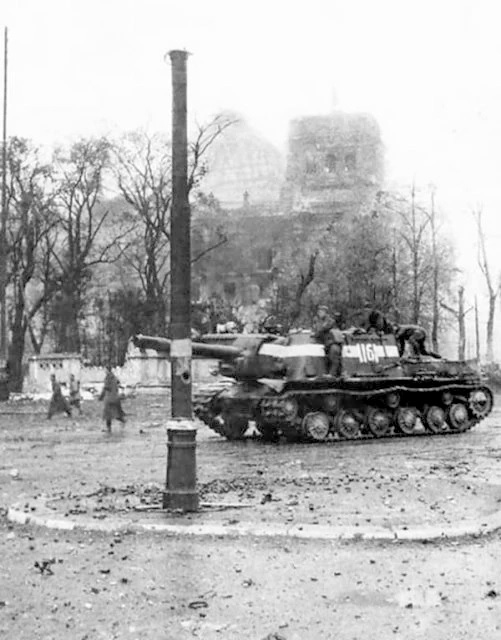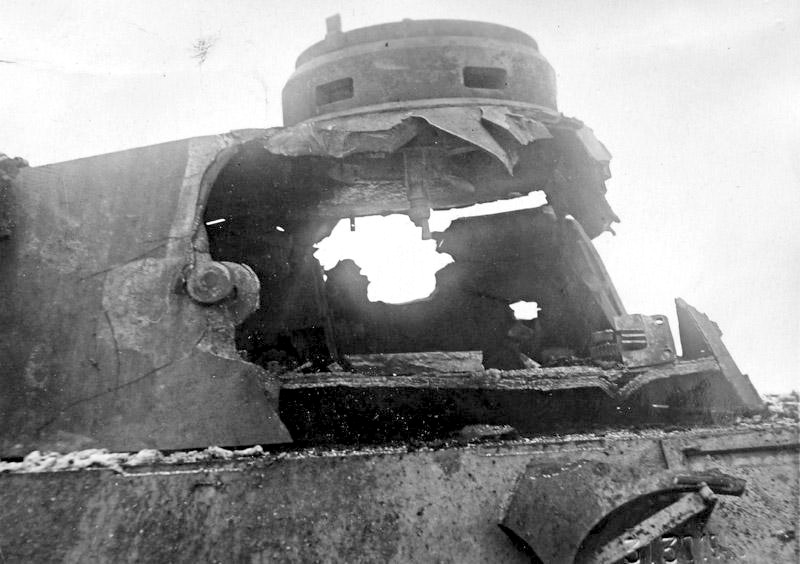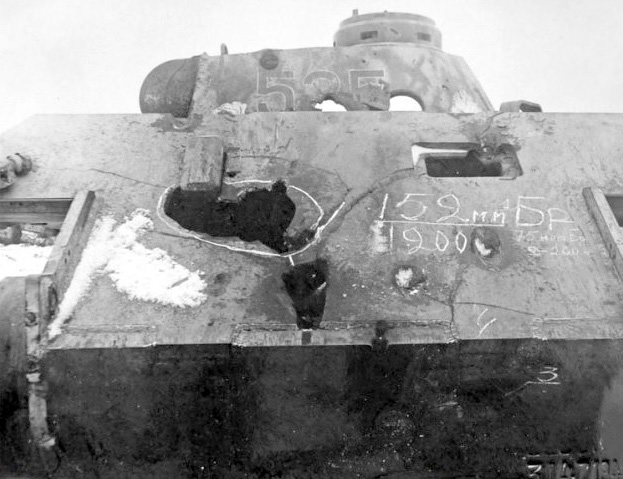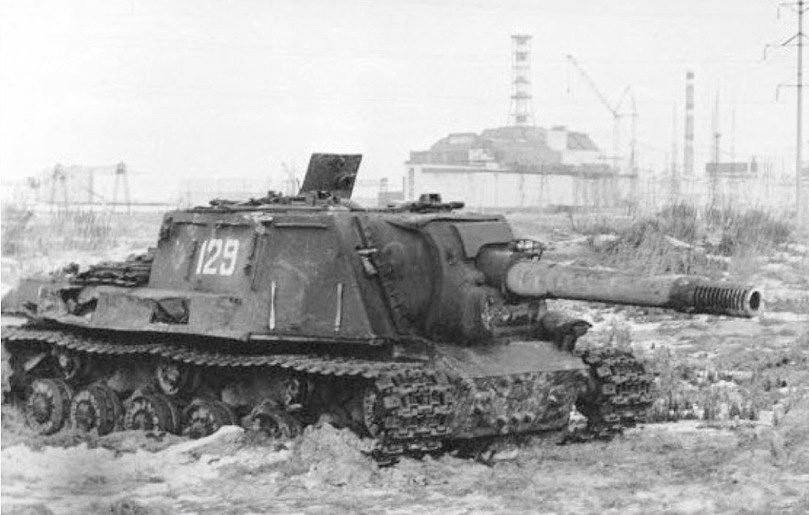Hello! Owen here with the American Heritage Museum. Welcome back to my blog series called Name Tag Defilade. I hope this finds you well in the midst of current events.
Today I wanted to talk about one of my favorite subjects, which are Soviet self-propelled guns. Specifically the SU- and ISU-152.
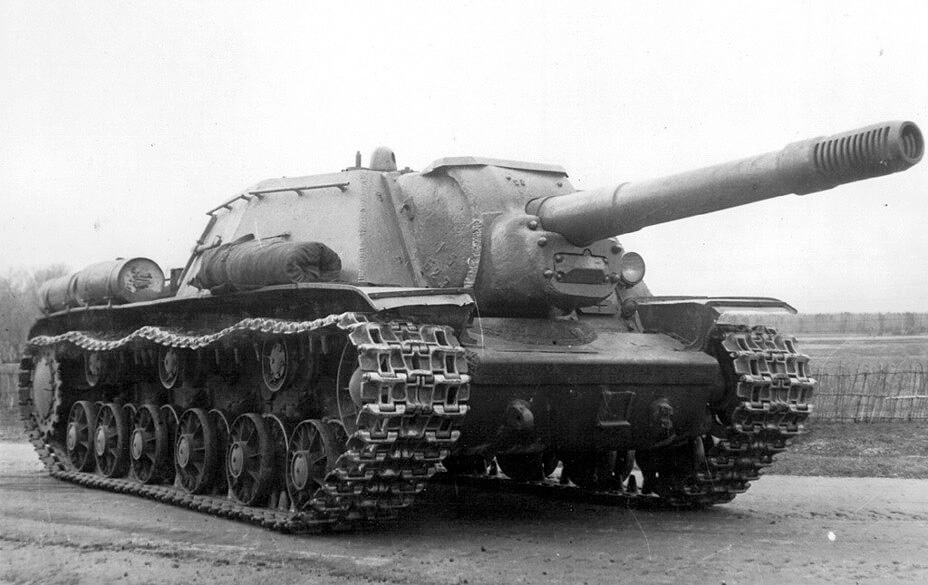
Shortly after the Battle of Stalingrad, the Red Army’s top brass realized that it was lacking heavy, mobile firepower. The German Wehrmacht had a wide variety of large-caliber self-propelled guns like the Hummel (Bumblebee,) Wespe (Wasp,) Grille (Cricket,) and even some guns built on captured French tracked chassis. This was not including the even larger variety of tracked tank destroyers, which could be used as self-propelled artillery if the situation dictates. With plans to go on the offensive ramping up, the Red Army was in need of a heavy gun mounted to a mobile chassis that was also able to withstand front-line combat. While the Russians had a fantastic artillery piece that could deal out incredible amounts of damage, the 203mm (8-inch) M1931 howitzer, a behemoth of a gun weighing 20 tons in combat trim, its crew was completely exposed and had shockingly bad traverse angles (only roughly 8 degrees) and even worse mobility. This was fine for a field gun that was going to be stationed far from the front lines, not difficult with a range of 18 kilometers (11 miles.) Sometimes though, there is a need for heavy firepower closer to the front, where it can be directed onto targets faster, or perhaps find its own. This had already been 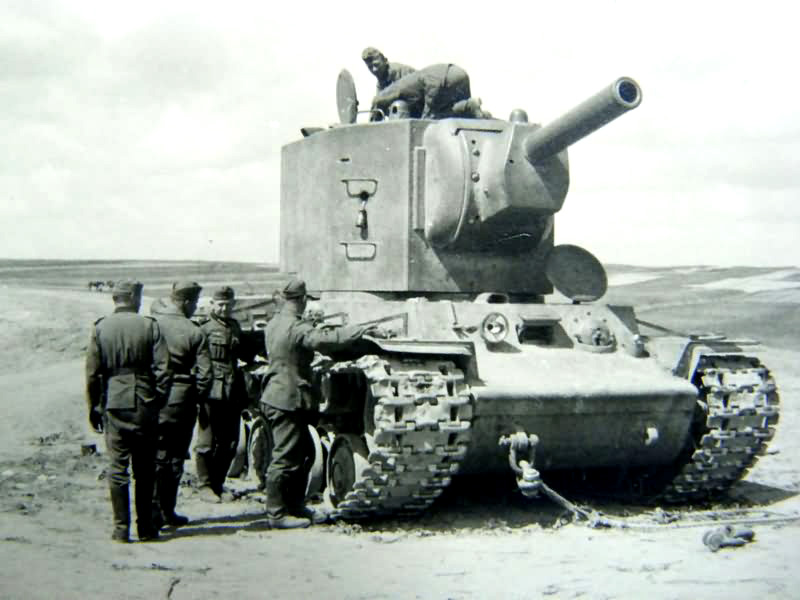 attempted with the KV-2 howitzer tank. Using the KV-1 heavy tank as a basis, a massive, box-like turret was fabricated to house a 152mm (6-inch) L20 howitzer. Nicknamed “dreadnoughts” by their six-man crews, the KV-2 proved the usefulness of an armored heavy gun in combat against the Finnish, though they weren’t without their issues. The KV-2 struggled to move quickly off-road, the large turret was not well balanced and had trouble traversing on the slightest slope. But, the KV-2 proved that mounting a large gun on a KV hull was an effective combination. In November 1942 a competition for a new Self-propelled gun design, with the newer, longer-barreled 152mm ML-20 howitzer set as the chosen weapon, started. By December a simple, cost-effective design drafted by Joseph Y. Kotin was chosen, and the Objekt 236 was constructed and sent for trials by the end of January 1943. The trials went well and the design, named the SU-152, was approved for construction in February.
attempted with the KV-2 howitzer tank. Using the KV-1 heavy tank as a basis, a massive, box-like turret was fabricated to house a 152mm (6-inch) L20 howitzer. Nicknamed “dreadnoughts” by their six-man crews, the KV-2 proved the usefulness of an armored heavy gun in combat against the Finnish, though they weren’t without their issues. The KV-2 struggled to move quickly off-road, the large turret was not well balanced and had trouble traversing on the slightest slope. But, the KV-2 proved that mounting a large gun on a KV hull was an effective combination. In November 1942 a competition for a new Self-propelled gun design, with the newer, longer-barreled 152mm ML-20 howitzer set as the chosen weapon, started. By December a simple, cost-effective design drafted by Joseph Y. Kotin was chosen, and the Objekt 236 was constructed and sent for trials by the end of January 1943. The trials went well and the design, named the SU-152, was approved for construction in February.
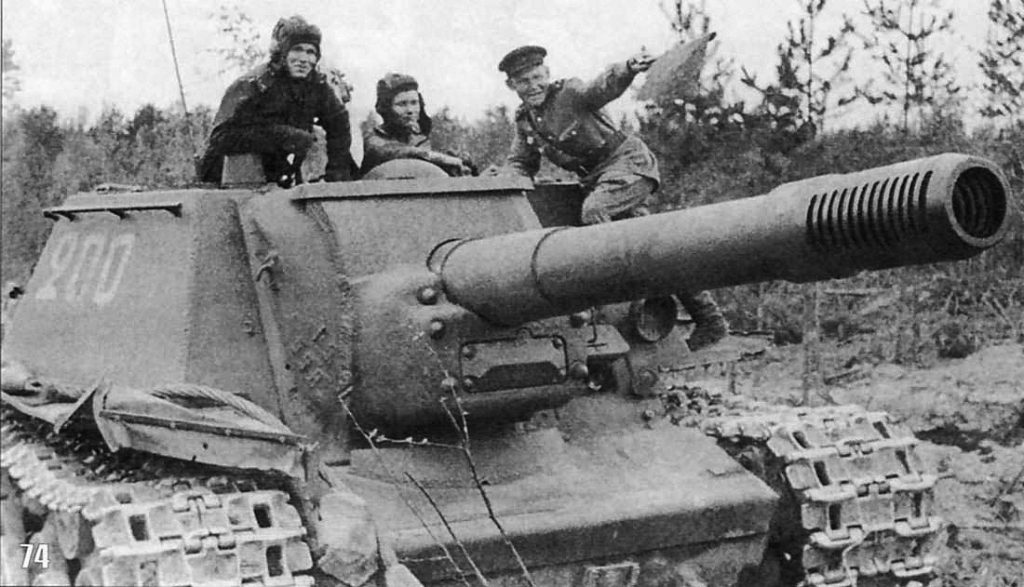 The SU-152 was by no means an elegant design. The hull of the KV-1S was used, driven by the same V-2K 12-cylinder diesel engine, pushing the 45 tons of vehicle along at a top speed of 27 miles per hour. Beneath a pillbox-like casemate, the ML-20 Howitzer was mounted slightly to the right to make room for the driver and the gun layer, and the gun itself was modified for use in a tight area. A long muzzle brake was fitted to the gun, which softened the recoil to a manageable level, and as an added bonus reduced the dust kicked up by the blast and gave the gun commander a chance to watch the fall-of-shot and adjust the gun layer onto his chosen target. Unfortunately, the small size of the fighting compartment meant only 20 rounds could be carried with the needed powder charges. It had a crew of 5, with two loaders complimenting the aforementioned commander, gun layer, and driver.
The SU-152 was by no means an elegant design. The hull of the KV-1S was used, driven by the same V-2K 12-cylinder diesel engine, pushing the 45 tons of vehicle along at a top speed of 27 miles per hour. Beneath a pillbox-like casemate, the ML-20 Howitzer was mounted slightly to the right to make room for the driver and the gun layer, and the gun itself was modified for use in a tight area. A long muzzle brake was fitted to the gun, which softened the recoil to a manageable level, and as an added bonus reduced the dust kicked up by the blast and gave the gun commander a chance to watch the fall-of-shot and adjust the gun layer onto his chosen target. Unfortunately, the small size of the fighting compartment meant only 20 rounds could be carried with the needed powder charges. It had a crew of 5, with two loaders complimenting the aforementioned commander, gun layer, and driver.
The ML-20 was a fairly new design for World War Two, and straddled the line between a field gun and a howitzer, which has a shorter barrel to “lob” shells in a high arc. The typical shell it fired was the OF-540 High Explosive shell, weighing about 97 pounds and an explosive equivalent of about 13 pounds of TNT. The ML-20 also used BR-540 and 540B Armor Piercing shells weighing roughly 105 pounds apiece. The SU-152 suffered from a low rate of fire, even with two loaders, averaging roughly 25 seconds per shot. Luckily, anything you hit with a 152mm shell is unlikely to want to fight back, that is, if its even able to. The SU-152 was sent initially to the front with no self-defense weaponry besides a pair of PPSh-41 submachine guns and a handful of grenades, though later a DShK 12.7mm machinegun was added to the roof.
In action, the SU-152 did its job well, smashing pillboxes and troop emplacements in line with the Soviet “deep battle” strategy. Its combat debut was at Kursk in summer 1943 and through the rest of that year, though due to its crude construction and the lower reliability of the KV-1S chassis, it quickly fell out of favor in lieu of the newer ISU-152, a similar design using the Iosif Stalin chassis with the same gun in a slightly larger (and therefore roomier) casemate. The SU-152 was last used in large numbers alongside its newer ISU cousin in Operation Bagration in spring 1944. The ISU-152 would replace the remaining SU’s as the supply of replacement parts dried up in favor of the better, more reliable platform.
The reason the SU- and ISU-152 have such a following today was because of how it earned its nickname, Zveroboi, or “Beast Slayer.” When we think about firing at a target like a tank, Armor Piercing would seem to make the most sense. You want to penetrate as much armor as possible, it should be your first choice, right?
Well, yes. But the SU-152s occasionally had to defend themselves against the fearsome German Tiger and Panther tanks, and occasionally square off against the “Elefant” tank destroyers. The ML-20’s breech had a special locking mechanism that would prevent it from being opened once it was loaded for safety reasons, overriding the mechanism would take up precious time. So when you’re staring at 55 tons of German steel bearing down on your position with high explosive in the tube, you shoot what you have loaded and hope it buys you some time to reload. As it turns out, firing a 6-inch, 100 pound high explosive
projectile at a tank carries some devastating effects. The shock of a high explosive round striking the hull of a tank can break weld seams and shear heavy equipment like radios off their mounts. The explosion can break tracks apart and blow road wheels clean off of their bearings. Not to mention the human impact of such a hit. The concussive effect of a high-explosive shell striking the exterior of a tank would instantly kill the men inside. On some occasions, the 152mm shell would simply shear the turret off of a tank by the explosive force alone. Because of this, SU and ISU-152’s were often called upon to work as tank destroyers, besides their usual anti-bunker and anti-building roles. Though later they were replaced in the anti-tank role by the SU-100, which had a 100mm (4-inch) gun devoted specifically to the task in a more maneuverable hull.
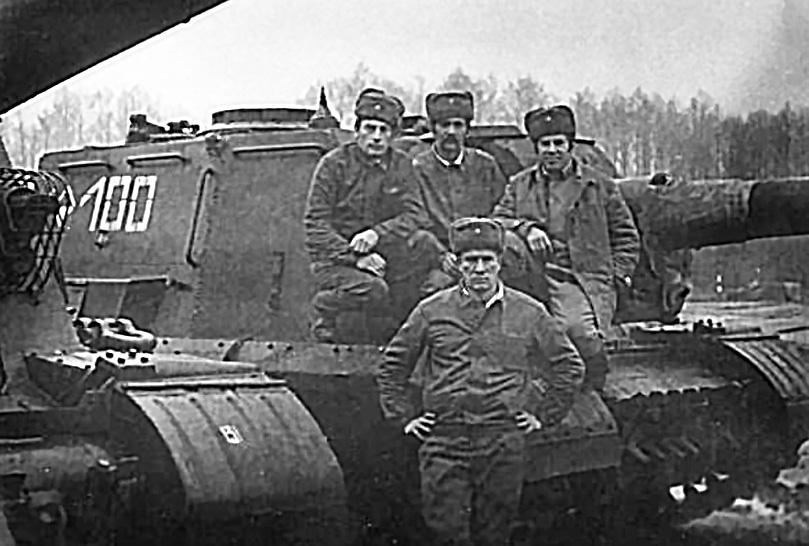
The ISU-152 would go on to serve, as with many Soviet vehicles, in many post-WWII conflicts including the Yom Kippur War in 1973. Many were still in “arsenal” storage in the USSR well into the 1980s. Most interestingly, the ISU-152 even found work in the Chernobyl Disaster in 1986, where they were called upon first to use their guns to shoot holes into a concrete wall to drain the water from underneath the stricken Reactor 4 via a pipe, but
when that plan was scrapped, the ISU’s were used to demolish buildings when the finesse of finer demolition equipment wasn’t required, and the 75mm thick armor plate was thought to prolong the likelihood of absorbing too much radiation.
Thank you so much for reading! I wish for everyone’s continued health and I look forward to sharing more history with you soon!

